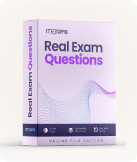HP HPE6-A73 - Aruba Certified Switching Professional Exam
Page: 1 / 25
Total 125 questions
Question #1 (Topic: Single Topic)
Which statement is correct regarding ACLs and TCAM usage?
A. Applying an ACL to a group of ports consumes the same resources as specific ACE entries
B. Using object groups consumes the same resources as specific ACE entries
C. Compression is automatically enabled for ASIC TCAMs on AOS-CX switches
D. Applying an ACL to a group of VLANs consumes the same resources as specific ACE entries
Answer: B
Question #2 (Topic: Single Topic)
What is correct regarding rate limiting and egress queue shaping on AOS-CX switches?
A. Only a traffic rate and burst size can be defined for a queue
B. Limits can be defined only for broadcast and multicast traffic
C. Rate limiting and egress queue shaping can be used to restrict inbound traffic
D. Rate limiting and egress queue shaping can be applied globally
Answer: A
Question #3 (Topic: Single Topic)
A network administrator needs to replace an antiquated access layer solution with a modular solution involving AOS-CX switches. The administrator wants to
leverage virtual switching technologies. The solution needs to support high-availability with dual-control planes.
Which solution should the administrator implement?
leverage virtual switching technologies. The solution needs to support high-availability with dual-control planes.
Which solution should the administrator implement?
A. AOS-CX 8325
B. AOS-CX 6300
C. AOS-CX 6400
D. AOS-CX 8400
Answer: C
Question #4 (Topic: Single Topic)
A company has implemented 802.1X authentication on AOS-CX access switches, where two ClearPass servers are used to implement AAA. Each switch has the
two servers defined. A network engineer notices the following command configured on the AOS-CX switches:
radius-server tracking user-name monitor password plaintext aruba123
What is the purpose of this configuration?
two servers defined. A network engineer notices the following command configured on the AOS-CX switches:
radius-server tracking user-name monitor password plaintext aruba123
What is the purpose of this configuration?
A. Implement replay protection for AAA messages
B. Define the account to implement downloadable user roles
C. Speed up the AAA authentication process
D. Define the account to implement change of authorization
Answer: C
Question #5 (Topic: Single Topic)
A company has an existing wireless solution involving Aruba APs and Mobility controllers running 8.4 code. The solution leverages a third-party AAA solution. The
company is replacing existing access switches with AOS-CX 6300 and 6400 switches. The company wants to leverage the same security and firewall policies for
both wired and wireless traffic.
Which solution should the company implement?
company is replacing existing access switches with AOS-CX 6300 and 6400 switches. The company wants to leverage the same security and firewall policies for
both wired and wireless traffic.
Which solution should the company implement?
A. RADIUS dynamic authorization
B. Downloadable user roles
C. IPSec
D. User-based tunneling
Answer: D
